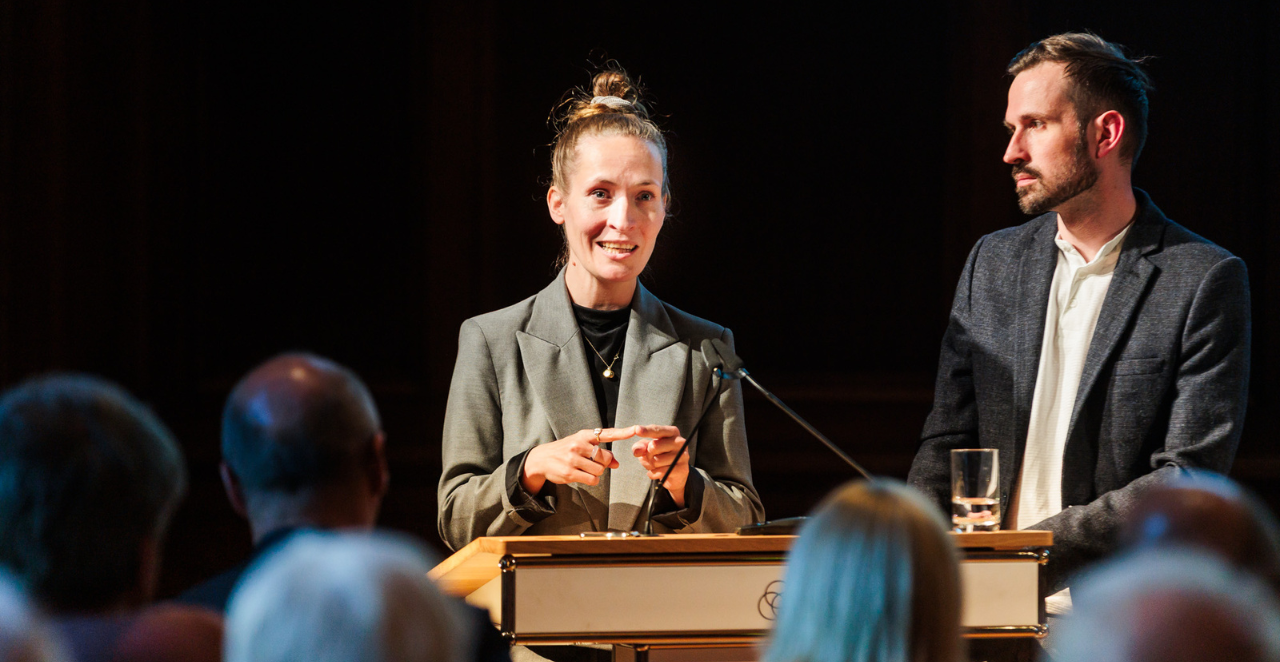
Review of the lecture „2x Fotografie: Zwischen Bewahren und Ausstellen“
On 13 May 2025, the Krupp Foundation hosted a lecture evening at Villa Hügel. Under the title “2x Fotografie: Zwischen Bewahren und Ausstellen (“2x Photography: Between Preserving and Exhibiting”), Peter Konarzewski, photo restorer at Museum Folkwang, and Dr Sophie-Charlotte Opitz, curator at Bucerius Kunst Forum, shed light on key questions regarding the handling of historical and contemporary photography. Professor Ralf Stremmel, Director of the Krupp Historical Archive, welcomed the audience.
Both lectures focussed on fundamental questions: How can photography be preserved for future generations? What role does digitisation play? And how do curatorial concepts influence our perception of images? Two disciplines that are often considered separately – conservation and exhibition – entered into an exciting dialogue here.
Between image and material: preservation
Peter Konarzewski provided insights into the ethical and practical dimensions of photographic restoration. It became clear that photography is not only an image, but also a physical object. The carrier – paper, film or other materials – is an integral part of the expressiveness of a photograph. The preservation of photographic collections therefore requires a deep understanding of the materials used, ageing processes and suitable conservation measures.
Konarzewski presented key aspects of photographic conservation: from the causes of material decay, storage and restoration to the potential of digitisation. Photographs are extremely sensitive to external influences such as light, moisture, temperature, air pollutants and mechanical stress. Interventions are therefore always carried out according to the principle: ‘as much as necessary, as little as possible’.
Between context and staging: exhibiting
Dr Sophie-Charlotte Opitz shed light on the curatorial side of photography. She emphasised that curating not only means exhibiting but also staging. Using the exhibition on Henri Cartier-Bresson, shown at Bucerius Kunstforum in 2024, as an example, she pointed out how spatial design, and the deliberate omission of additional explanatory material can intensify the visual effect. The focus is often on the tension between contextualisation and the autonomy of the image.
At the same time, Opitz emphasised the socio-political dimension of photography: as a cultural artefact, it is not only documentation, but also an instrument of power, memory and identity formation – from ID photography as a means of control to images that question or expand social narratives.
Digital photography
Both speakers also reflected on digital photography: what counts as an original – the file or the physical object? Opitz pleaded for open curatorial strategies: the exhibition of a photography on a flat screen, for example, not only enables a more environmentally friendly presentation without transport but is also ideal from a conservation point of view. Peter Konarzewski emphasised the need for a two-pronged strategy for the preservation of photographs: analogue preservation must be combined with digital accessibility. Purely digital preservation would fall short if the material heritage was to be preserved.
Commitment of the Krupp Foundation
With this event, the foundation built on its long-standing commitment to photography: From preserving 2.5 million photographs in the Krupp Historical Archive to engaging in exhibition and publication projects and supporting young talents – such as Sophie-Charlotte Opitz, who is a former scholarship holder of the ‘Museum Curators for Photography’ programme.
